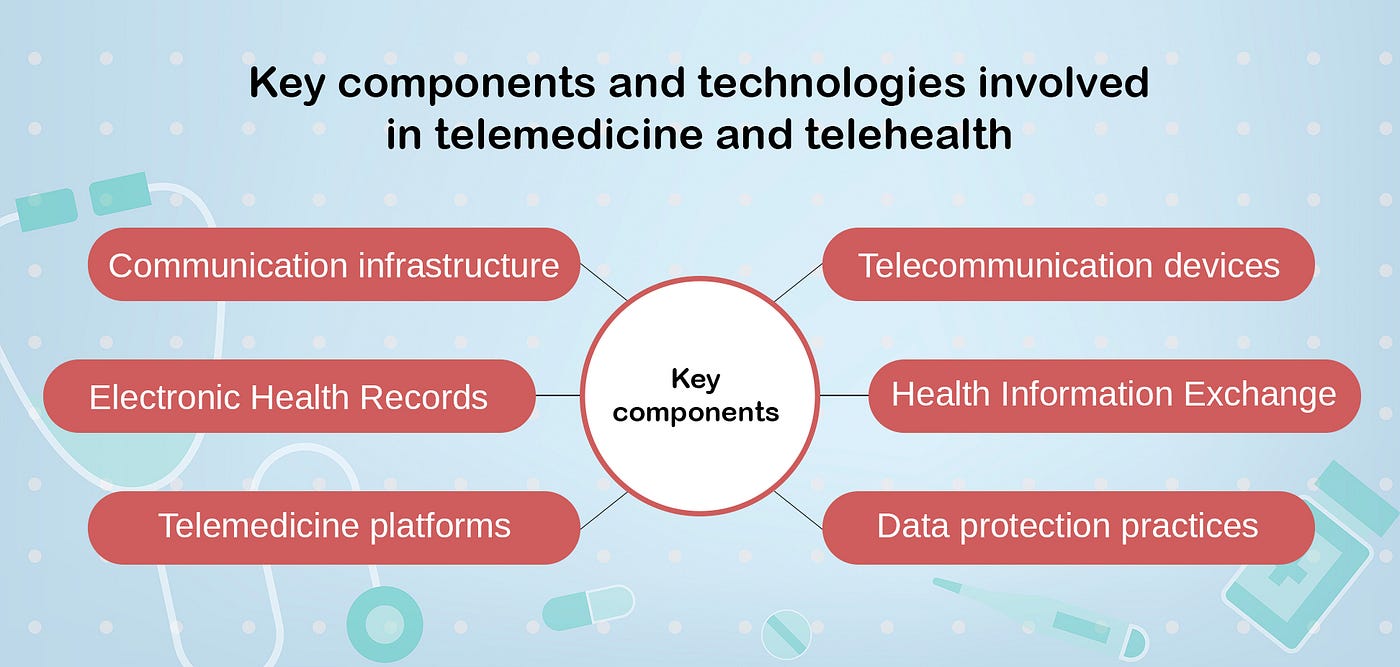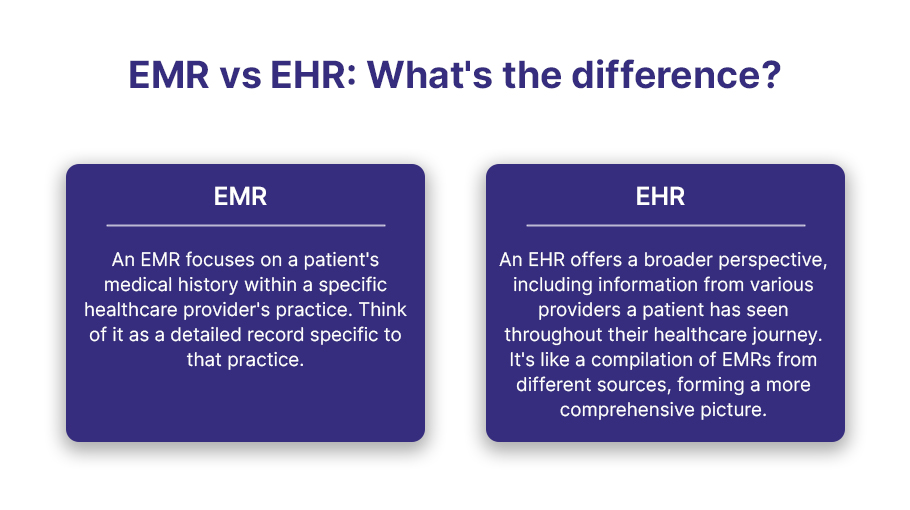If you’ve ever wondered how doctors keep track of your medical history so quickly and accurately, the answer lies in Electronic Health Records (EHR). Understanding the key components of an EHR is essential because it directly affects the quality of your healthcare.
Knowing what makes up these systems can help you feel more confident about how your health information is managed and shared. You’ll discover the main parts that work together behind the scenes to make your medical care smoother and safer.
Keep reading to unlock the secrets of your health data’s digital backbone.
Core Elements Of Electronic Health Records
Electronic Health Records contain patient information, medical history, and treatment details. They also include lab results, medication lists, and appointment schedules. These parts help doctors give better care and keep records organized.
Understanding the core elements of Electronic Health Records (EHR) is crucial for both healthcare providers and patients. These records play a vital role in ensuring seamless communication and efficient treatment planning. They bring together various components that contribute to a comprehensive view of a patient’s health, facilitating better healthcare outcomes.Patient Demographics
Patient demographics are the foundation of EHRs. They include essential details like your name, age, address, and contact information. This data helps in identifying you accurately and is crucial for personalized care.Medical History
Your medical history is a detailed account of your past health conditions, surgeries, and treatments. It’s like having a health timeline that doctors can refer to, ensuring they understand your health journey. This helps in identifying patterns and planning future care.Medications And Allergies
Knowing what medications you are on and any allergies you have can prevent adverse drug reactions. This section of the EHR helps in prescribing medicines safely. It also ensures that your treatment plans are effective and tailored to your needs.Immunization Records
Your immunization records show the vaccines you have received. This is particularly important for public health and preventing outbreaks. Staying up-to-date with vaccinations is crucial, and this section helps keep track of them.Laboratory And Test Results
Lab results and test findings provide insights into your current health status. They help in diagnosing conditions and monitoring progress. Having them in your EHR means any doctor you see can access this information instantly, leading to quicker decision-making.Radiology Images
Radiology images like X-rays and MRIs give a visual insight into your internal health. These images are crucial for diagnosing issues that aren’t visible to the naked eye. Having them in your EHR ensures that specialists can easily review and provide informed opinions.Treatment Plans
Treatment plans outline the strategy for managing your health conditions. They include prescribed therapies, lifestyle changes, and follow-up schedules. This section ensures continuity of care, especially if you consult multiple healthcare providers.Progress Notes
Progress notes are records of your healthcare visits and the observations made by your doctors. They provide a narrative of your health journey, capturing changes and improvements. This helps in assessing treatment effectiveness and making necessary adjustments. By understanding these core components, you can better appreciate the role EHRs play in your healthcare. How familiar are you with your own electronic health record? Taking an active role in reviewing your EHR can empower you to be a partner in your healthcare journey.
Credit: medium.com
Interoperability And Data Sharing
Interoperability and data sharing are at the heart of effective Electronic Health Records (EHR). They ensure that patient information flows seamlessly between different healthcare providers, improving care coordination and patient outcomes. Without smooth data exchange, critical health details can be delayed or lost, affecting decisions and treatment quality.
Health Information Exchange
Health Information Exchange (HIE) allows different healthcare organizations to share patient data securely. It connects hospitals, clinics, labs, and pharmacies, so your health records follow you wherever you go. Imagine visiting a new doctor who instantly accesses your medical history—this is the power of HIE.
HIE reduces redundant tests and speeds up diagnosis. But it requires trust and strong security measures to protect sensitive information. How comfortable are you with your health data being shared across multiple providers?
Standards And Protocols
Standards and protocols are the rules that make data sharing possible. They define how data is formatted, transmitted, and received, ensuring everyone speaks the same technical language. Without these, your EHR system would be like a foreign language to other systems.
Common standards like HL7, FHIR, and DICOM keep data consistent and compatible. For example, FHIR allows developers to build apps that access patient records easily. Knowing these protocols exist helps you understand why some systems connect better than others.
Integration With Other Systems
Integration is about connecting EHRs with other healthcare technologies like lab systems, billing software, and patient portals. When these systems work together, you get a complete view of your health without jumping between platforms.
Good integration means your lab results automatically appear in your EHR, and your doctor can see your medication history right away. Have you noticed how some healthcare providers offer apps that track your visits and prescriptions? That’s integration at work, simplifying your healthcare experience.
Security And Privacy Measures
Security and privacy measures are vital in electronic health records (EHR). They protect patient data from unauthorized access and breaches. Strong safeguards help maintain trust between patients and healthcare providers. These measures also ensure the integrity of sensitive medical information.
Access Controls
Access controls limit who can see or change patient data. Users must log in with unique IDs and passwords. Some systems use two-factor authentication for extra security. Role-based access restricts data based on job duties. This keeps data safe from unauthorized users.
Data Encryption
Data encryption turns information into unreadable code. It protects data during storage and transmission. Even if hackers access the data, they cannot read it. Strong encryption standards keep patient records confidential. Encryption is a key defense against data theft.
Audit Trails
Audit trails record who accessed or changed data. They track the time and type of access. These logs help detect suspicious activities quickly. Audit trails support accountability and transparency. They are essential for investigating data breaches.
Compliance With Regulations
EHR systems must follow laws like HIPAA and GDPR. These rules set standards for data security and privacy. Compliance ensures patient rights are respected. Healthcare providers face penalties if they fail to comply. Following regulations builds patient confidence in EHR systems.
User Interface And Accessibility
The user interface and accessibility of an Electronic Health Record (EHR) system play a crucial role in how effectively healthcare providers and patients interact with the platform. A well-designed interface reduces errors, saves time, and improves overall satisfaction. Accessibility ensures that everyone, regardless of their tech skills or physical abilities, can use the system without frustration.
Ease Of Use For Clinicians
Clinicians need a user interface that feels intuitive and minimizes clicks. Complex menus and hidden functions slow down care delivery and increase the risk of mistakes. An EHR with clear navigation, customizable dashboards, and quick access to frequently used features can make a big difference in a busy clinical environment.
Have you noticed how some systems let you chart a patient’s visit in less than five minutes? That speed comes from thoughtful design focused on user needs, not just data entry.
Patient Portal Features
Patient portals extend EHR benefits directly to the people receiving care. They should offer easy appointment scheduling, access to lab results, and clear communication channels with providers. When portals are simple and responsive, patients feel more in control of their health journey.
Think about the last time you tried to find your test results online. Did the portal make it easy or frustrating? Your experience can guide what features matter most in patient portals.
Mobile Access
Mobile access is no longer a luxury—it’s a necessity. Clinicians often move between rooms or facilities, and patients want health info on-the-go. A mobile-friendly EHR interface adapts to smaller screens without losing functionality.
Imagine checking a patient’s medication list from your phone while walking down the hall. If the app is clunky or slow, it disrupts your workflow. Smooth mobile access means better decisions anytime, anywhere.
Clinical Decision Support Tools
Clinical Decision Support Tools are vital parts of Electronic Health Records (EHR). They help healthcare providers make informed decisions quickly. These tools offer real-time guidance based on patient data and medical knowledge. They improve patient safety, reduce errors, and enhance care quality.
Alerts And Reminders
Alerts notify doctors about critical patient information immediately. They warn about drug interactions, allergies, or abnormal test results. Reminders prompt timely actions, such as vaccinations or routine screenings. These features reduce missed diagnoses and prevent harmful mistakes.
Diagnostic Assistance
This tool helps doctors analyze symptoms and test results. It suggests possible diagnoses based on patient information. It supports faster and more accurate decision-making. Diagnostic assistance reduces guesswork and improves patient outcomes.
Treatment Guidelines
Treatment guidelines provide evidence-based recommendations for care. They help clinicians choose the best therapies for specific conditions. Guidelines ensure consistent and up-to-date care across different providers. They promote safer and more effective treatment plans.

Credit: bellmedex.com
Administrative And Billing Functions
Administrative and billing functions are vital parts of an Electronic Health Record (EHR) system. These features help healthcare providers manage daily tasks efficiently. They reduce errors, save time, and improve patient experience. Proper handling of these functions ensures smooth operations in clinics and hospitals.
Appointment Scheduling
Appointment scheduling tools allow staff to book, change, or cancel patient visits easily. The system shows available time slots and sends reminders to patients. This reduces missed appointments and keeps the clinic organized. Patients can also request appointments online, making the process faster.
Insurance Claims
EHR systems handle insurance claims to speed up payment processes. They verify patient insurance details and submit claims electronically. This reduces paperwork and lowers the chance of claim denials. Providers get paid faster, and patients face fewer billing issues.
Reporting And Analytics
Reporting tools track financial and administrative data. They generate reports on billing, payments, and appointment trends. Analytics help identify areas for improvement and optimize workflow. These insights support better decision-making for healthcare managers.

Credit: www.morelandconnect.com
Frequently Asked Questions
What Are The Main Components Of An Electronic Health Record?
The main components include patient demographics, medical history, medications, allergies, lab results, and treatment plans. These elements ensure comprehensive patient care and efficient data management.
How Do Electronic Health Records Improve Patient Care?
EHRs provide instant access to accurate patient data, reducing errors. They support better diagnosis, treatment coordination, and timely medical decisions, improving overall patient outcomes.
Why Is Interoperability Important In Electronic Health Records?
Interoperability allows different healthcare systems to share patient information securely. It enhances care continuity, reduces duplicate tests, and improves communication among providers.
What Role Do Clinical Notes Play In Ehrs?
Clinical notes document patient encounters, symptoms, and physician observations. They serve as a critical record for ongoing care and legal documentation.
Conclusion
Electronic Health Records include many important parts. Patient information, medical history, and test results work together. These elements help doctors give better care. EHRs also support easy sharing of data. They save time and reduce errors. Understanding these key components is useful for everyone.
It shows how technology aids health care. Keep in mind, good EHRs improve patient safety. They make health information clear and easy to use. This knowledge helps patients and providers work well together.
Leave a Reply